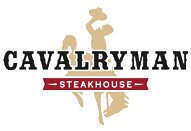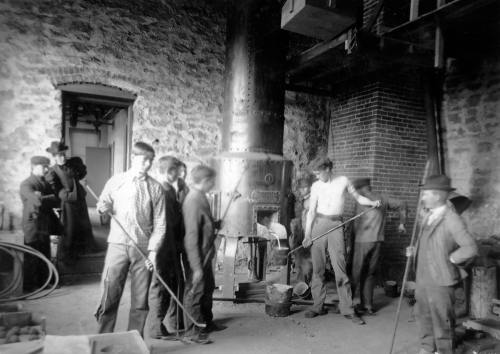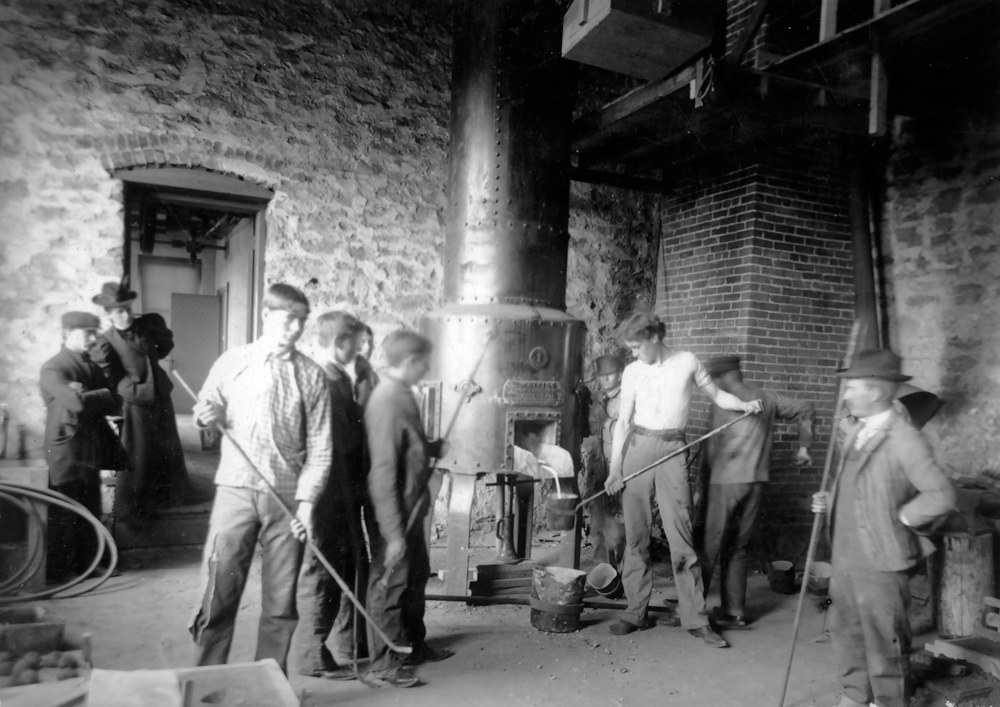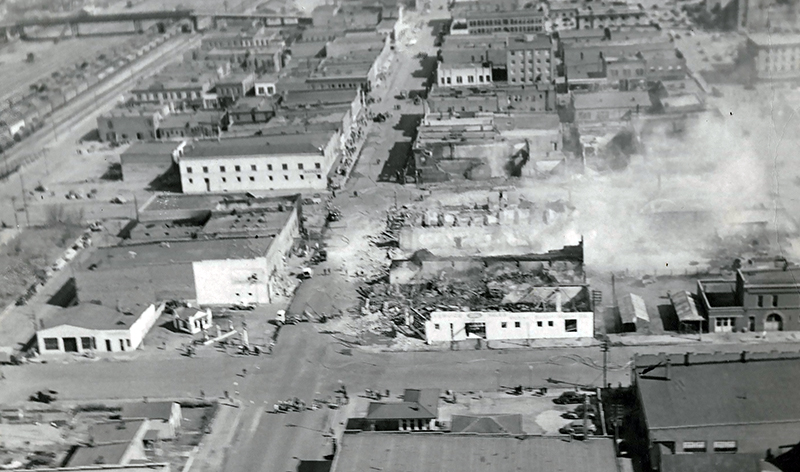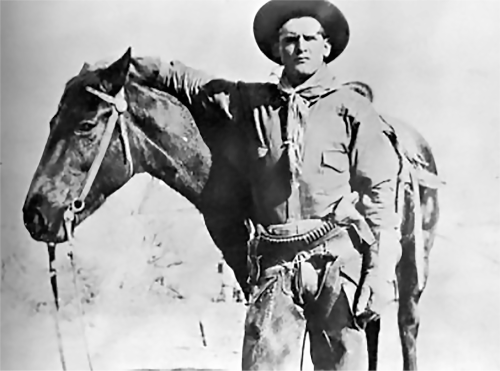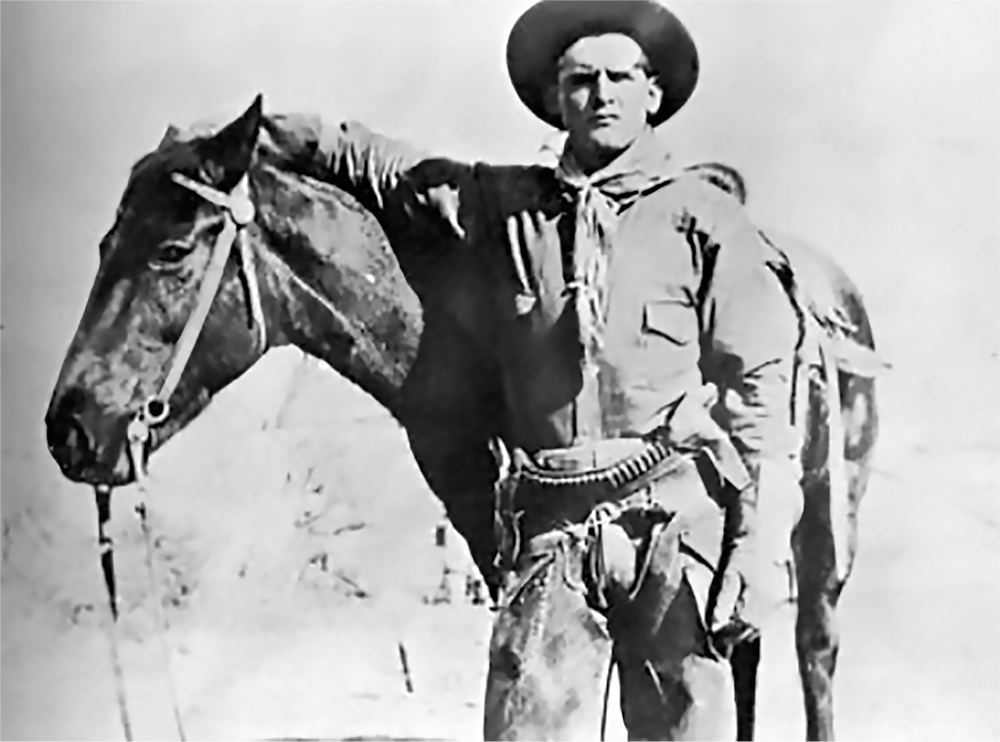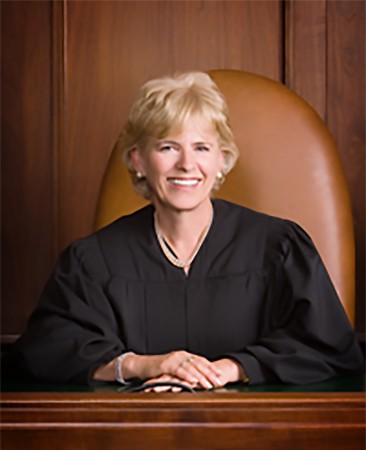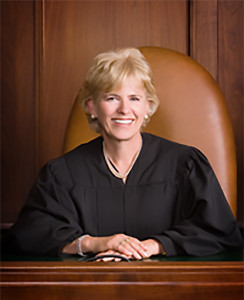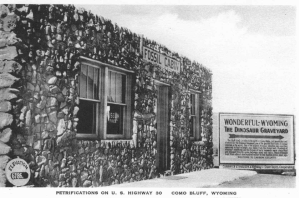Rural Electrification Changed Farm Life Forever in Wyoming
With the flip of a switch at a substation in Lingle, Wyoming on December. 5, 1937, a new age began for Wyoming farmers and ranchers who had been “left in the dark” far too long.
Not many people directly benefited that day with the completion of Wyoming’s first Rural Electrification Administration (Wyrulec) project. The Torrington-based cooperative only had 101 members. But the lifestyles of farmers and others living in rural parts of the state soon changed dramatically, with the addition of refrigerators, air conditioners, electric ranges and other appliances, plus improved farm equipment that made their lives considerably easier.
By the end of 1939, 417 rural electric cooperatives were operating across America. By June 1951, slightly more than three-quarters of Wyoming’s farms were receiving central station electric power, and there were 16 rural electric cooperatives operating in Wyoming.
Establishing Cooperatives
The men who formed the first electric cooperative in Wyoming had acted quickly. Congress passed the Rural Electrification Act on May 21, 1936. Wyrulec was soon created, and officials filed its articles of incorporation in August 1936. At a December 22 meeting, the members decided to request a $29,000 loan from the REA to build about 25 miles of line.
The pioneering cooperative was operated frugally. Wyrulec rented an office in Torrington for $8 a month. The company’s first truck cost $782.
Watching how their dollars were spent helped Wyoming’s electric cooperatives make an impressive rate of repayment to the federal government. At the end of 1951, 16 cooperatives in the state had borrowed a total of about $13.5 million, but only $4,742 was delinquent. Six of the cooperatives were actually making their payments ahead of schedule.
After Wyrulec began operating, other cooperatives soon followed. Just 19 days later, on Christmas Eve, 1937, the Wheatland REA turned on its power.
“The desire for electricity was there, but [farmers] were skeptical about spending money,” said Lillie Goodrich of Wheatland, describing in a 1980 newspaper interview the terrible economic conditions in the area in the mid-1930s. Her husband, Ward, was the plant manager from its opening until 1960.
Cattle were selling for 2 cents per pound, while sheep went for a penny and a half. It had been that way for the past five or six years, she recalled.
A group of citizens canvassed area residents and found support to form a local electric cooperative. Wheatland REA officials won a $65,000 loan, and then contracted with Donovan Construction to build a substation and construct 55 miles of distribution line.
Changing rural lives
After working for Donovan, Fred Schott—who had begun unloading poles as a lineman—obtained the city’s first license to wire homes. He was hired by the REA for $75 a month and drove his own pickup truck. He was on call for both normal work and any outages that occurred.
“Most outages always seem to occur at night or on weekends,” he explained to a Wheatland newspaper reporter years later, chuckling at the memory.
In addition to the $5 initiation fee to join the cooperative, members were charged a monthly rate of $3.50 for 40 kilowatt hours. Meters were read on the 21st of each month.
“People would use the electricity until they reached 40 kilowatts, then turn it off at the meter,” Schott related.
Goodrich recalled that rural life changed a lot with the addition of electric power. “Back in the 1930s, a lot of women raised chickens for extra money,” she recalled. “We lost a lot of them due to cold weather, but with the coming of electricity, we could keep the baby chicks warm.”
Electricity enabled rural residents to have bathtubs in their houses, as water no longer had to be heated in a large container on the back of the wood or coal stove. But electric stoves were rare in the area. Schott, who worked for the Wheatland REA for three years, from 1936 to 1939, said during that time only two families had them.
Electric refrigerators were much sought after, but used a lot more electricity than buyers expected. “People would purchase one, then their meter would run over the 40 kilowatt minimum,” Schott remembered. “First they would think something was wrong with the meter. When they learned the refrigerator was doing it, some of them broke down and cried.”
Electricity and the New Deal
The effort to bring electricity to America’s farms and ranches was long and hard fought. Private utility companies mounted a huge lobbying campaign against the idea of the federal government loaning money to rural electric cooperatives, even though the companies had no interest in extending their own lines to rural areas. The cost of construction was considered prohibitive, since the new lines would be serving very few new customers—especially in states like Wyoming, where farmhouses can be many miles apart.
Before World War I, only a few farms were connected to power lines. Progress in electrical engineering boosted the number in the early 1920s, but the total was still only about 10 percent nationally by the mid-1930s. Such advances were even slower to reach Wyoming, with only 527 farms by that time–about 3 percent—receiving electrical service.
Lack of electrical power and the modern appliances that came with it had severely limited how people lived their lives on America’s farms. By the early 1930s, there were literally two Americas. In one, urban dwellers had access to modern household amenities, including radios. Electricity powered streetlamps and house lights, enabled subways to operate and gave residents access to running water. City people could get both news and entertainment from radio and movies.
Meanwhile, most American farmers led a life of drudgery, even if they didn’t think of it that way. On average, a farmer spent 10 hours a week carrying water for his family, his animals and his crops. Plowing, planting and harvesting crops were largely done with human or animal power. On many farms, poor sanitation and the inability to store food resulted in both poor diets and high levels of disease.
Expecting cooperation from private power companies to help merge these starkly different American experiences, President Franklin Roosevelt signed an executive order on May 11, 1935, creating the Rural Electrification Administration. His goal was to give private companies the financial incentive to bring electricity to the most rural parts of the nation.
Roosevelt was then two years into his first term, backed by a sympathetic Congress in confronting the Great Depression with the policies of his New Deal. He sank $100 million into the rural electrification plan, but watched with increasing anger as the private companies refused to go along.
The REA’s focus then shifted to lending money to rural electric cooperatives so they would build their own systems. Congress made the REA a permanent agency on May 21, 1936, in a bill Roosevelt happily signed. Lawmakers authorized the agency to spend $420 million over the next 10 years. Officials of large power companies were outraged by the move, because they–incorrectly–believed the federal government was trying to tax their businesses out of existence and replace them with a nationwide group of cooperatives.
Despite the industry’s intense lobbying to defeat the REA bill, it passed. This allowed people in communities like Torrington and Wheatland to promptly start cooperatives and bring the conveniences of the modern world to their rural homes and businesses.
Wyoming’s U.S. Senator Joseph C. O’Mahoney was a strong supporter of federally backed rural electrification, from the New Deal through the 1950s. In this 1951 photo, the senator smokes a pipe carved in the likeness of President Harry S. Truman, a gift from the chief executive. American Heritage Center.“[In 1940] farmers threw away their wood and coal stoves, their old flat irons, battery radios and kerosene lamps, and the pump handles hit the dump when electricity became a reality in the tri-state area,” said Mark Byers of Hereford, Wyo., treasurer of the Wheatland REA.
Politics and Electric Power
When Joseph C. O’Mahoney of Wyoming was elected to the U.S. Senate in 1932, there wasn’t a single rural electrical cooperative in Wyoming. A few farms and ranches generated electricity with windmills and generators that charged ranks of batteries in so-called Delco plants, named for the company that made them popular. But few had electric power delivered by any kind of central station system, even though it had been a half-century since inventor Thomas Edison opened the first central generating power system in the country, the Pearl Street Power Station in New York City, in 1882.
On May 11, 1940, when the rural electric substation east of Carpenter in Laramie County was switched on, about 1,000 people showed up to celebrate. None was likely happier than O’Mahoney, a Democrat and a Roosevelt supporter, who was asked to speak at the event.
“The rural areas of Wyoming, as indeed all of the country, are a far better market now for the city merchant and the national manufacturer,” O’Mahoney noted. “The record shows that the farmer invests in plumbing, in electric appliances, in vehicles, four times as much as is invested under the REA loans in the power facilities themselves.”
“I believe we can write this day in our memory books as one of the most significant in the history of Laramie County. … The federal activity which makes electric energy available to farm homes is one of the most dramatic and important innovations of our time,” the senator said. He also predicted that, as a result of the electrical power used to improve agricultural practices, Laramie County would become one of the best farming areas in the whole state.
By 1951, with immense financial help given by REA, the 16 local cooperatives provided three-fourths of all the farms and ranches in Wyoming that year—9,626 in all—with electricity. After the lines were built, the cooperatives then purchased power from either public or private sources.
The Rural Electric Company project was huge, with 162 miles of line that began south of Grover, Colo., passed through Hereford and Carpenter, headed north to Albin and then from west to east from Crow Creek near Cheyenne to Bushnell, Neb.
O’Mahoney told the assembled crowd at the 1940 event in Carpenter that the local power came from the Seminoe Dam in central Wyoming, part of a project recently completed by the U.S. Reclamation Service.
More than $25,000 had flowed into the reclamation fund from royalties paid by oil producers on public land in Wyoming, O’Mahoney said. “So every farm home which received power from this project is now participating in [the benefits of] oil royalties collected from our public lands,” he explained.
“There was a time when most of the profits of oil developments were taken beyond the boundaries of this state,” the senator added. “Now, however, these royalties are used in such a fashion as to give direct benefit to every citizen of this state.”
Rural electrification was one of the central achievements of the New Deal of the 1930s. (Shmoop.com). In addition to household conveniences, the new electricity powered agricultural improvements too. Martha Thompson, a Carpenter farmer and unofficial historian of the area, noted during the 40th anniversary of the substation’s opening that O’Mahoney “was quick to grasp the importance of pump irrigation, but admitted that even he had no idea at the beginning of the drive by farmers to bring electricity into the area of the great potential quantities of water which could be pumped from the ground.”
Obstacles and Advantages
Even though money was readily available to them through the REA, Wyoming rural cooperatives still ran into plenty of obstacles bringing electricity to farms and ranches. Chief among these difficulties were the great distances between rural homes.
The pioneering cooperatives in the state spent approximately $1,000 per mile of line.
By the end of 1951, Wyoming rural cooperatives served 15,274 farms and rural homes, but this number translated into only 1.6 consumers per mile of line. That low number was steadily dropping as the cooperatives stretched their work into even more remote areas.
Despite such problems, Wyoming cooperatives benefited from two factors. The first was low wholesale rates on power made available to the systems by Bureau of Reclamation generating plants.
The second was the rapid increase in the amount of electric power that ranchers, irrigation farmers, mines, lumber mills, rural processing plants and other customers were consuming.
“This high potential use of electric power goes far to offset the many difficulties in distribution,” noted a 1952 review of the progress of rural electrification in Wyoming, published by the Senate under O’Mahoney’s oversight. “If a farmer used electric power solely for household lighting and a radio, the construction costs of a long extension to reach his home could scarcely be justified. … High consumption pays off the cost of extended lines within reasonable periods of time.”
The System of Cooperatives
There were several reasons why cooperatives were formed to extend electricity to rural areas. For one thing, many rural people were already familiar with using the cooperative form of enterprise for marketing and to purchase farm supplies.
Rural electrification cooperative members usually paid $5 in fees to join the enterprise. They were able to keep costs down by reading their own meters, reporting dangerous line conditions immediately and avoiding unnecessary service calls. To further reduce operating costs, many members calculated their own bills and paid them.
Each cooperative elected a board of directors from among its membership. The directors usually had an annual meeting to review operations and set policy. They served without pay, but hired a paid manager to handle the day-to-day management of the cooperative.
Initially, rural cooperatives in Wyoming took advantage of the many auxiliary services the REA provided to borrowers, including advice on line construction and rates, legal assistance in making presentations to the Wyoming Public Service Commission, management-analysis services and auditing. As their personnel gained expertise, though, the cooperatives began to assume more of these duties.
At first, the REA charged between 2 and 3 percent interest, and the maximum loan period was 25 years. In 1945, all REA loans were set at 2 percent simple annual interest for not more than 35 years.
Rising Farm Production
As the REA spread electricity to more rural areas, the power became a vital factor in modern farming. Because many rural dwellers had chosen to move to cities, there was by the early 1940s a short supply of labor in agriculture. At the same time, several factors were increasing agricultural production goals, including military needs, the nation’s growing population, efforts to help America’s allies and rising standards of living.
Hydropower from new U.S. Bureau of Reclamation dams in Wyoming, such as Boysen Dam shown here under construction about 1950, supplied much of the demand from rural customers served by the new REA cooperatives. American Heritage Center. Thanks to electricity, farmers were able to do more with fewer workers. During the 1940s, because of electrification and other factors, gross production per agricultural worker in the U.S. increased by about 30 percent.
As rural electrification expanded, so did the business it brought to rural communities. A study showed that for every $1 invested in rural power facilities, farmers invested an additional $4.50 in wiring, plumbing and electrical appliances.
The 1952 Senate review of the impact of the REA also pointed to economic benefits to the state from the opening of new sawmills, mines for bentonite and other ores, and additional tourist facilities in some of Wyoming’s most scenic areas and historic places.
Humble Beginnings
Although Wyrulec was the first cooperative formed in Wyoming, the seeds of the idea that became the Big Horn REA had been planted about a year earlier during a picnic sponsored by the Big Horn County Farm Bureau in the summer of 1935 and held on the Davis Ranch east of Greybull, in Wyoming’s Bighorn Basin. At the event, Big Horn County Extension Agent E. Van Wagenen explained to the ranchers, farmers and their families how much easier their lives would be with electricity.
According to Van Wagenen, the REA Office in Washington, D.C., recommended that instead of planning electric cooperatives in several communities in the area, a countywide cooperative–Big Horn Rural Electric–would be more cost-efficient.
On Feb. 13, 1937, the Greybull Valley project officially got under way with an $82,000 REA loan. Just a dozen days short of a year later, M.M. Roush threw the switch energizing the line and turning on the lights for 225 family farms in the Greybull Valley and Emblem Beach area.
The company known today as Lower Valley Energy, headquartered in Jackson, Wyo., began in 1937 as Lower Valley Power & Light, Inc., with just 10 members signed up for the new cooperative when the effort began. Lower Valley Power & Light – one of 16 rural electric cooperatives that would eventually operate in Wyoming – obtained a $145,000 loan from the REA at 2.77 percent interest per year.
In Afton, on the western edge of Wyoming in Lincoln County, the private Star Valley Power & Light had begun supplying electricity to residents in 1907, but the farmers and ranchers in other parts of the valley waited for power for more than 30 years. By Nov. 12, 1938, when its first substation opened and the lines were energized, the cooperative included 287 members. The company held a celebration that day at its office in Freedom, in Star Valley on the Idaho line.
By the end of 1951, practically every farm and home in Star Valley, as well as in Swan Valley and Irwin just over the line in Idaho, were receiving electricity service, and the cooperative continued to add new members and new services. Today, the Wyoming Rural Electric Association represents 14 electric power distribution cooperatives that provide electricity to more than 104,000 homes, businesses, ranches and farms across the state.
Brighter Evenings
Gene Baldwin, during a 1995 oral history conducted for the Weston County Historical Society in Newcastle, said his father was instrumental in getting electricity into the area, which Baldwin described as sparsely populated in the late 1930s.
“The REA went, I guess, to the areas that offered more potential for income,” he noted. “We finally got electricity [in Weston County in 1945], but we always did have electricity at our place. We had a generator and about 25 or 26 batteries. It was 15 volt then, and later on we improved it with a wind charger.”
Baldwin recalled, “I remember one of the things as a little kid I always wanted was an electric train, but never could have one because they only ran on 110 volts and 32 wouldn’t quite cut it.”
Despite lacking a toy train, Baldwin said electricity was a big improvement over gas lamps people had carried. His uncle, who didn’t get electric power right away, still had the lamps when Baldwin was a boy. He was fascinated by them, he said.
“But you didn’t have the best light,” he recalled. “You didn’t do much in the evening that took a lot of light.”
For thousands of Wyoming farmers and ranchers, that began changing in 1937 with the flip of a switch in Lingle.
The 1951 photo of U.S. Sen. Joseph C. O’Mahoney, D-Wyo. smoking a pipe carved into a caricature of President Harry Truman’s face, the 1949 photo of an electrically well-equipped kitchen, and the ca. 1950 photo of an electrical tower at Boysen Dam are all from the Joseph C. O’Mahoney papers at the American Heritage Center at the University of Wyoming. Used with permission and thanks.
Resources
